Interweaving myths and memories
Against the backdrop of the New York City skyline, a collection of vibrant artworks by Suchitra Mattai is spread throughout the Socrates Sculpture Park. The exhibition, We are nomads, we are dreamerstransforms the park into a space for contemplation and reflection on identity, diaspora and the coming to terms with history. sculptural The installation is part of a busy year for the Los Angeles-based artist, who is represented by Roberts Projects and whose work continues to challenge and redefine the boundaries of art, culture and memory.
Mattai’s work and practice are deeply personal, rooted in her experiences as the child of Indian parents who emigrated from Guyana. Her family’s history of being brought from India by the British as indentured labourers to work on sugar cane plantations is a strong undertone in her work. She draws on this rich, complex history to create pieces that challenge colonial and patriarchal narratives, using materials and techniques passed down from her grandmothers. The result is a body of work that connects the domestic with the mythical, the past with the future, and the personal with the universal. We are nomads, we are dreamers will be on display at Socrates Sculpture Park until August 25, 2025.
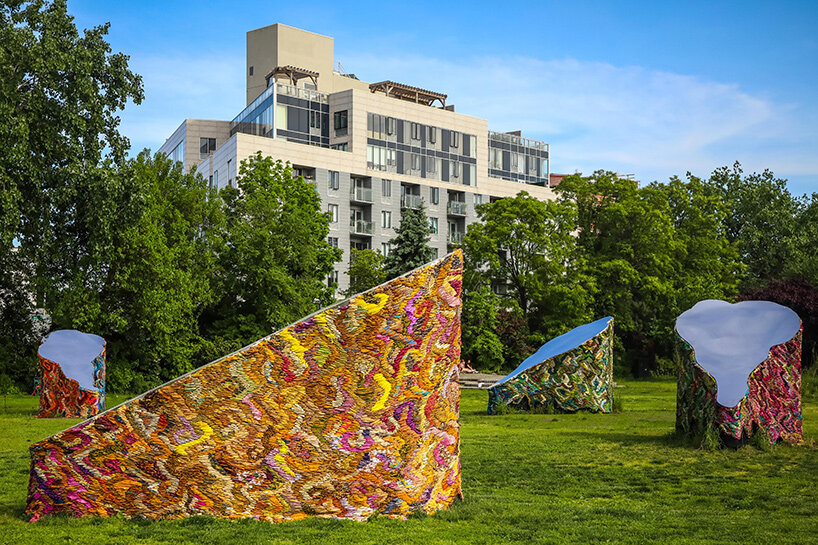
Suchitra Mattai, in the making, 2024. Photo by Scott Lynch, courtesy of Socrates Sculpture Park
vibrant textiles envelop sculptural capsules
In Socrates Sculpture Park‘S We are nomads, we are dreamersSuchitra Mattai weaves together memory, myth and material culture. The installation consists of six “pods” made of worn saris and mirrored stainless steel, organic forms that evoke glacial deposits and embody the artist’s vision of an imagined mythological landscape. These pods are at once sculptures and artifacts from a future where the diasporic experience is celebrated and reclaimed. The saris, drawn from South Asia and its many diasporas, are woven together into a tapestry that symbolizes a community brought back together after the dispersing forces of colonialism.
The artistMattai’s process is as much about the transformation of materials as it is about the transformation of narratives. Old saris, found needlepoint and paintings are fashioned into new forms and covered with beading and embroidery to add complexity and depth. These craft practices, traditionally associated with the domestic sphere, are highlighted in Mattai’s work, blurring the boundaries between high and low art. The transformation of these materials serves as a metaphor for the reclamation and rewriting of history in which women’s work is not only recognized but celebrated.
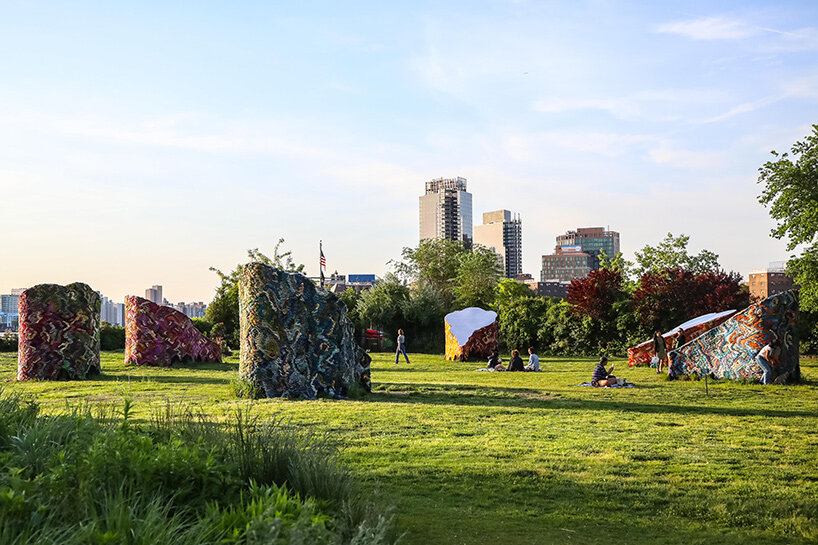
Suchitra Mattai, in the making, 2024. Photo by Scott Lynch, courtesy of Socrates Sculpture Park
Dialogue with Suchitra Mattai
Database: We are nomads, we are dreamers at Socrates Sculpture Park aims to interweave memory, myth and material culture. Can you tell us how your personal history and diaspora experience influenced the themes of this exhibition?
Suchitra Mattai (SM): My work aims to give a voice to those whose stories have gone unheard. The park’s proximity to the East River, a tributary of the Atlantic Ocean, a site of countless migrations, and its location in Queens, which has hosted so many immigrants, played an important role in the conception of the project. My own family’s story as forced laborers in Guyana, brought from India by the British to work on sugar plantations, fuels my desire to remember their lives, strength, and perseverance.
The installation consists of six “pods” made of worn saris and mirrored stainless steel. These organic forms are reminiscent of glacial deposits that I experienced during my childhood in Nova Scotia. They are artifacts from the future that form an imagined mythological landscape. By “weaving together” thousands of recycled saris from South Asia and its numerous diasporas, I am attempting to rejoin a community that has been dispersed by colonization and other means.
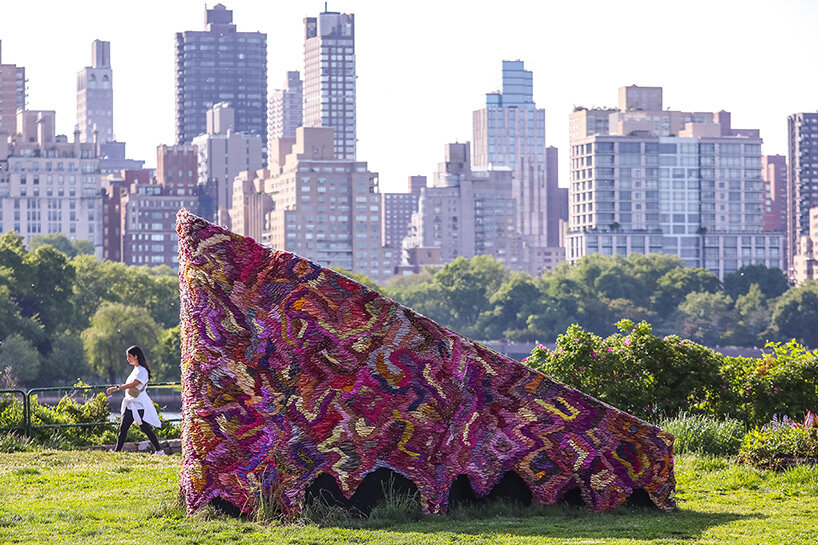
Suchitra Mattai, in the making, 2024. Photo by Scott Lynch, courtesy of Socrates Sculpture Park
DB: In your work you often use old saris and found materials, which you reinterpret in new forms. What does the process of transforming these materials mean to you and how do you see it as an opportunity to reclaim or rewrite history?
SM: Materials have their own history, connotation and aura. By using the saris to “paint” and “mold,” these recycled materials are transformed into something new, but they still carry the smell, patterns and history of the women who wore them. The transformation adds new layers and complexity to the original stories. It is a very disorienting experience being an immigrant, so taking materials from my own experience and connecting them to “home” is a way for me to feel grounded. I grew up wearing saris (on special occasions) and being able to make connections to my past through the clothing of South Asian women connects me to my ancestral past and highlights the presence and importance of these women in the world.
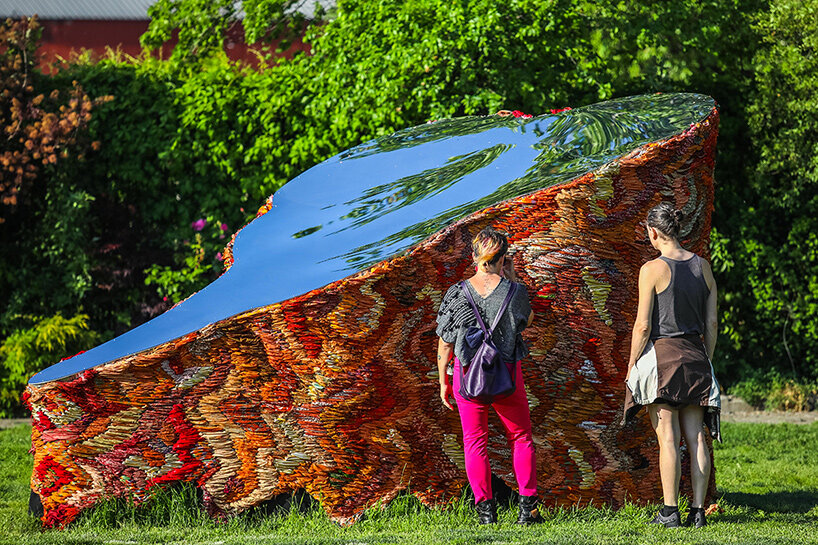
Suchitra Mattai, in the making, 2024. Photo by Scott Lynch, courtesy of Socrates Sculpture Park
DB: Your work places a strong emphasis on women’s labour, particularly in craft activities. How do these domestic, craft-based processes relate to your broader commentary on colonial and patriarchal structures?
SM: My aim is to celebrate women’s work. The use of craft processes once confined to the domestic sphere defies categorical boundaries and inserts women’s lives into a patriarchal system.
DB: The heroines in your plays are described as powerful, mythical, yet empathetic. Can you explain the role of these characters in your work and how they represent the possibilities of a “wondrous future space”?
SM: This utopian future space is full of abundance and empathy. My female characters are often embroidered, sewn and woven from pre-existing tapestries. I rework the narratives in these tapestries, which often depict members of the aristocracy, to include brown women. In other examples, I harness the power of pre-existing mythological figures and goddesses, both East and West, to give space and voice to brown women.
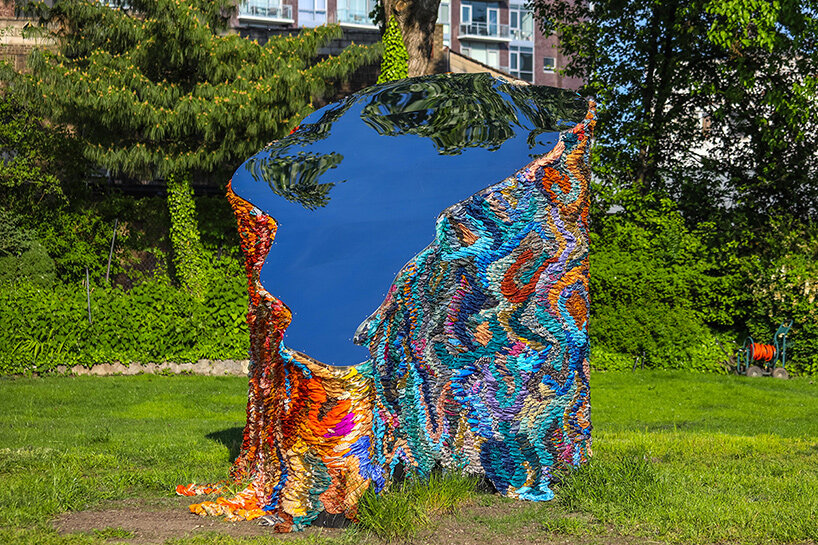
Suchitra Mattai, in the making, 2024. Photo by Scott Lynch, courtesy of Socrates Sculpture Park
Database: We are nomads, we are dreamers is part of a productive year for you with numerous solo and group exhibitions. How do you deal with the challenge of maintaining a coherent narrative across these different platforms?
SM: I trust my intuition. I want to create work that is honest but also poetic. I am interested in expanding what we consider “coherent” in the Western art world. The best art, poetry, art and music is expansive and defies convention. There is an overarching conceptual framework, but within that space I want to allow freedom to experiment. Work that balances on the boundaries of the known and unknown is what I strive for.

